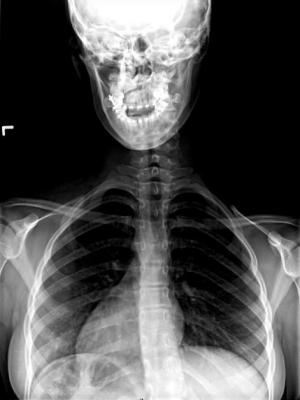
October 7, 2013 — Shriners Hospitals for Children in Portland, Ore. announced the availability of the new EOS Imaging System, the first technology capable of providing full-body, 3-D images of patients in a natural standing or sitting position using low radiation doses.
At Shriners Hospitals for Children, 10,000-12,000 radiological images are taken each year of its 6,000 active patients. More than 40 percent of the X-rays taken are of children's spines for diagnosis of conditions like scoliosis and other spinal deformities. Patients with scoliosis typically undergo imaging every three to six months over a period of several years, which can amount to more than 20 total scans over the course of treatment[i]. The EOS system provides high-quality, radiographic images of the patient's skeleton while delivering a radiation dose up to nine times less than a conventional radiography X-ray[ii] and up to 20 times less than a CT scan[iii]. This low dose makes the system of particular value for pediatric patients, especially children who need to be imaged frequently to monitor disease progression such as those with scoliosis.
"EOS represents a breakthrough in orthopedic imaging, offering not only the best quality image but also the most advanced low-dose X-ray technology for orthopedic imaging. Shriners Hospitals of Children-Portland is very excited to bring this technology to our patients in the Pacific Northwest,” said Michael Aiona. M.D., chief of staff, Shriners Hospitals for Children-Portland.
The EOS system is also the only 3-D, full-body technology capable of scanning patients in a weight bearing standing or sitting position to capture natural posture and joint orientation. This is especially important if a patient uses a wheelchair or other supportive device. Research has demonstrated an intricate relationship between regions of the musculoskeletal system, particularly between the spine and lower body, and 3-D bony images of the skeleton enable physicians to make more informed diagnosis and treatment decisions. Without EOS, clinicians often have to "stitch" together multiple smaller, 2-D images to approximate a full picture of the targeted anatomy. This process is particularly problematic for complex orthopedic conditions such as spinal disorders.
The EOS system, developed by EOS imaging, is based upon particle detection technology and has been shown to be appropriate for a range of musculoskeletal conditions including those involving the hip, knee and spine.
For more information: www.eos-imaging.com
References
i National Scoliosis Foundation. What You Need to Know About X-Rays.
ii S. Parent et al., Diagnostic imaging of spinal deformities: Reducing patients radiation dose with a new slot-scanning x-ray imager – Spine April 2010, 35 (9): 989.
iii D. Folinais et al., Lower Limb Torsional assessment: comparison EOS/CT Scan – JFR 2011


 December 10, 2025
December 10, 2025 









